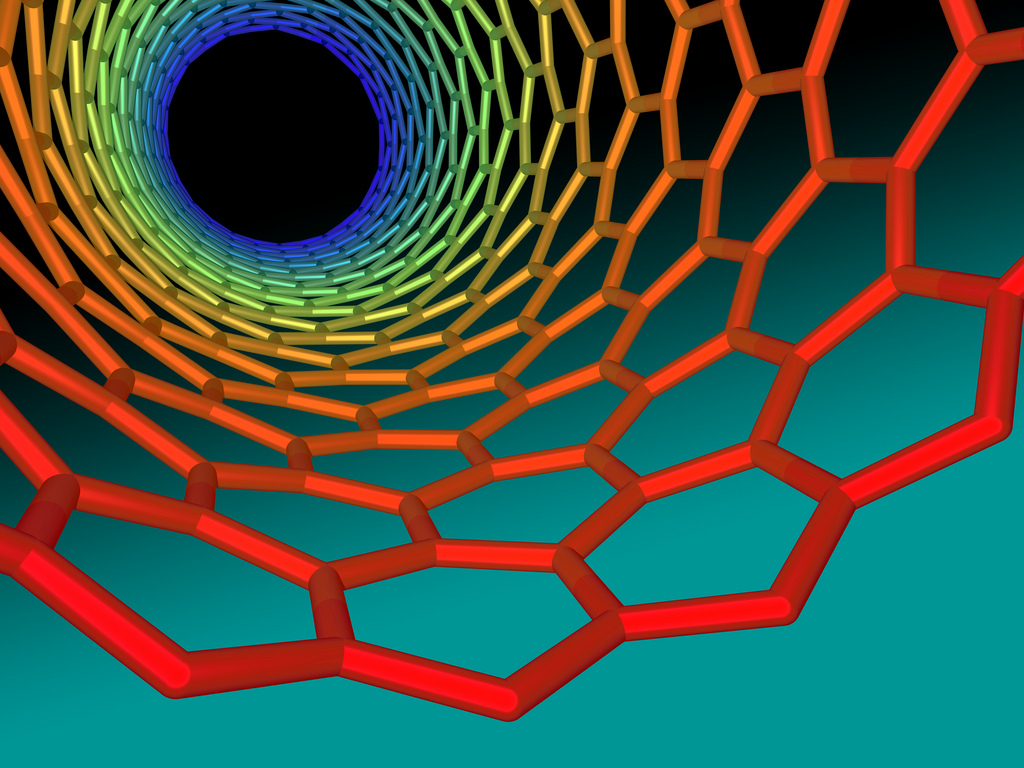Recent Advances in Carbon Nanotubes a Promising Approaches in Cancer Therapy
The carbon nanotube's structure can be thought of as a sheet of graphite which has been rolled into a cylinder. A nanotube can also contain multiple cylinders of different diameters nested inside one another. This type is called a multi-wall nanotube (MWNT).
The whole 28 pages article is available for download here.
A nanotube with just one cylinder is referred to as a single-wall nanotube (SWNT). Other varieties of nanotubes include ropes, bundles and arrays. Over the past two years, researchers have demonstrated repeatedly that certain types of carbon nanotubes are among the most effective materials known for transporting proteins, genes, and drug molecules across the cell membrane. Now, an attempt to better understand this process has found that virtually any type of carbon nanotube can enter a wide variety of cell types. Significant progress in interfacing carbon nanotubes with biological materials has been made in key areas such as aqueous solubility, chemical and biological functionalization for biocompatibility and specificity, and electronic sensing of proteins. This article reviews the current trends in biological functionalization of carbon nanotubes and their potential applications for cancer diagnostics. The present work complies the review on carbon nanotubes and its efficacy in treatment of cancer and also reports the mechanism and properties.
Carbon nanotubes (CNTs) are allotropes of carbon with a cylindrical nanostructure. Nanotubes have been constructed with length-to-diameter ratio of up to 28,000,000:1, which is significantly larger than any other material. These cylindrical carbon molecules have novel properties that make them potentially useful in many applications in nanotechnology, electronics, optics and other fields of materials science, as well as potential uses in architectural fields. They exhibit extraordinary strength and unique electrical properties, and are efficient conductors of heat. Their final usage, however, may be limited by their potential toxicity.
Nanotubes are members of the fullerene structural family, which also includes the spherical buckyballs. The ends of a nanotube might be capped with a hemisphere of the buckyball structure. Their name is derived from their size, since the diameter of a nanotube is on the order of a few nanometers (approximately 1/50,000th of the width of a human hair), while they can be up to several millimeters in length (as of 2008). Nanotubes are categorized as single-walled nanotubes (SWNTs) and multi-walled nanotubes (MWNTs).
The nature of the bonding of a nanotube is described by applied quantum chemistry, specifically, orbital hybridization. The chemical bonding of nanotubes is composed entirely of sp2 bonds, similar to those of graphite. This bonding structure, which is stronger than the sp3 bonds found in diamonds, provides the molecules with their unique strength. Nanotubes naturally align themselves into "ropes" held together by Van der Waals forces. Under high pressure, nanotubes can merge together, trading some sp2 bonds for sp3 bonds, giving the possibility of producing strong, unlimited-length wires through high-pressure nanotube linking.
The whole 28 pages article is available for download here.

